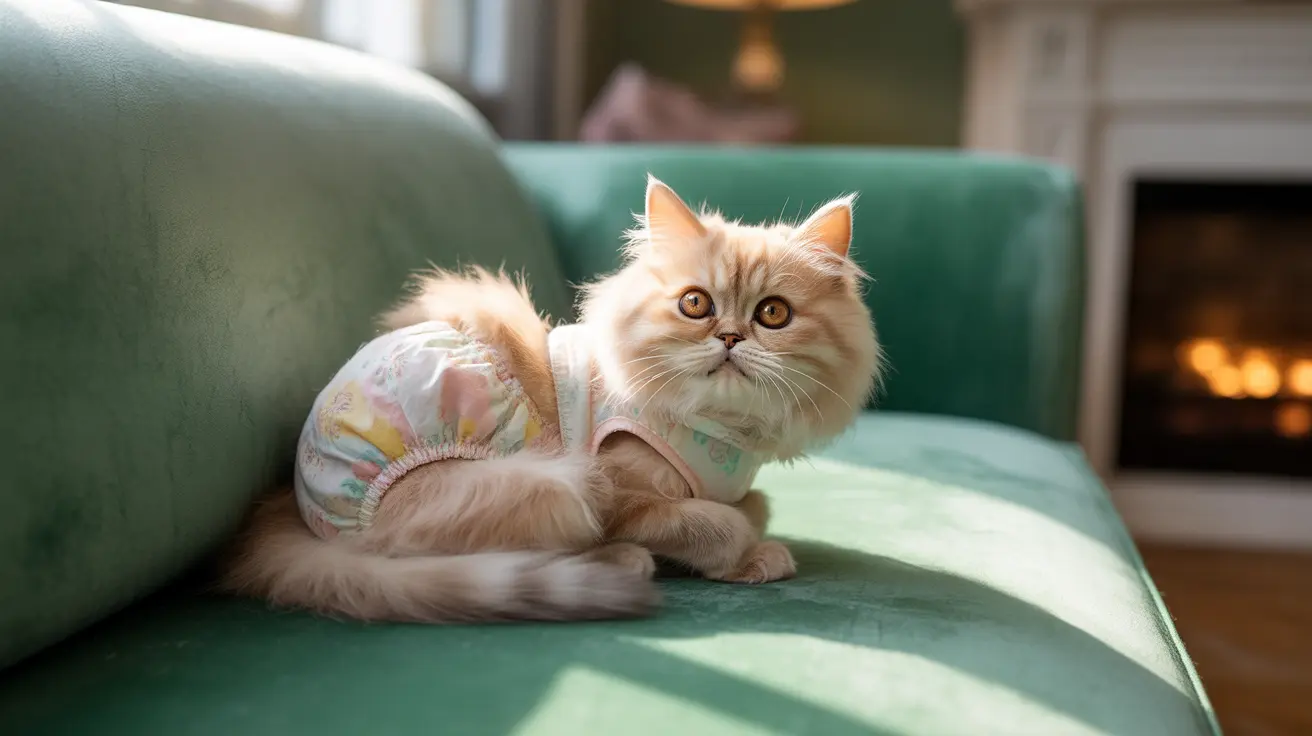Creating homemade diapers for kittens requires careful consideration of materials, fit, and safety. Whether you're caring for an incontinent cat, a recovering pet, or a young kitten, understanding how to make and use proper diapers is crucial for both the animal's comfort and your home's cleanliness.
In this comprehensive guide, we'll explore the step-by-step process of making DIY cat diapers (yavru kedi bezi yapımı), including material selection, sizing considerations, and essential care tips to ensure your kitten's health and comfort.
Essential Materials for DIY Cat Diapers
Before starting your DIY cat diaper project, gather these essential materials:
- Soft, absorbent fabric (cotton or microfiber)
- Waterproof outer layer material
- Elastic bands
- Velcro or snap fasteners
- Scissors
- Measuring tape
- Sewing supplies (if making reusable versions)
Step-by-Step DIY Cat Diaper Instructions
Measuring Your Kitten
Proper measurements are crucial for a comfortable, leak-proof fit:
- Measure waist circumference
- Measure between legs and over back
- Add 1-2 inches for comfort and movement
- Note tail position for hole placement
Creating the Basic Design
Follow these steps to construct your DIY kitten diaper:
- Cut fabric according to measurements
- Create a waterproof outer shell
- Add absorbent inner layer
- Install elastic bands for secure fit
- Add fasteners for easy removal
- Create properly sized tail hole
Safety and Comfort Considerations
When making and using DIY cat diapers, prioritize these safety aspects:
- Use breathable, non-toxic materials
- Ensure proper circulation around legs and tail
- Check regularly for signs of irritation
- Change diapers frequently to prevent infection
- Monitor for allergic reactions to materials
Daily Care and Maintenance
Proper maintenance of your DIY cat diapers includes:
- Regular washing of reusable diapers
- Immediate changing when soiled
- Daily skin inspection
- Proper cleaning of the diaper area
- Storage in clean, dry conditions
Frequently Asked Questions
How can I make a comfortable and effective DIY diaper for my kitten at home?
Create a diaper using soft, absorbent fabric for the inner layer and waterproof material for the outer layer. Ensure proper measurements and include elastic bands for a secure fit around legs and waist.
What materials are best for creating a reusable and leak-proof cat diaper?
Use cotton or microfiber for absorbency, PUL (polyurethane laminate) for waterproofing, and gentle elastic bands. Ensure all materials are non-toxic and washing machine safe.
When and why should I use diapers for my kitten instead of other options like pee pads?
Use diapers for kittens with incontinence, during recovery from surgery, or when dealing with mobility issues. They're especially useful when constant movement makes pee pads impractical.
How do I properly measure and fit a diaper on a small or disabled kitten to prevent leaks and irritation?
Measure the waist and the distance between legs, adding 1-2 inches for comfort. Ensure the tail hole is properly sized and positioned, and check that elastic bands provide security without being too tight.
What are the essential hygiene tips and health precautions when using diapers on kittens?
Change diapers frequently, clean the area thoroughly during changes, monitor for skin irritation, and maintain proper washing procedures for reusable diapers. Check with your veterinarian if you notice any signs of discomfort or infection.
Conclusion
Creating DIY cat diapers (yavru kedi bezi yapımı) requires attention to detail and proper material selection. While it may take some practice to perfect your technique, following these guidelines will help ensure your kitten's comfort and health while keeping your home clean.
Remember to monitor your kitten closely when using any type of diaper, and consult with your veterinarian if you notice any signs of discomfort or skin issues. With proper care and maintenance, DIY cat diapers can be an effective solution for managing your kitten's needs.






